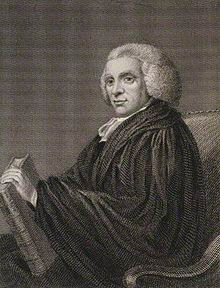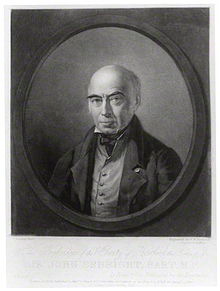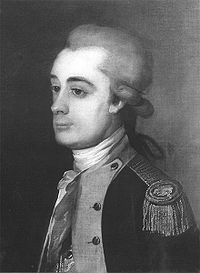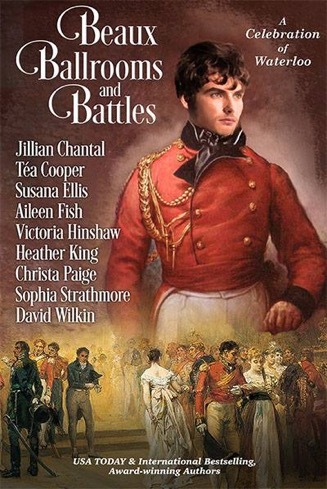D.W. Wilkin's Blog, page 10
December 7, 2016
Regency Personalities Series-William Jones of Nayland
Regency Personalities Series
In my attempts to provide us with the details of the Regency (I include those who were born before 1811 and who died after 1795), today I continue with one of the many period notables.
William Jones of Nayland
30 July 1726 – 6 January 1800

William Jones
William Jones of Nayland was born at Lowick, Northamptonshire, but was descended from an old Welsh family. One of his ancestors was Colonel John Jones, brother-in-law of Oliver Cromwell. He was educated at Charterhouse School and University College, Oxford. There a taste for music, as well as a similarity of character, led to his close intimacy with George Horne, later bishop of Norwich, whom he induced to study Hutchinsonian doctrines.
After obtaining his bachelor’s degree at University College, Oxford in 1749, Jones held various preferments (Vicar of Bethersden, Kent (1764); Rector of Pluckley, Kent (1765)) . In 1777 he obtained the perpetual curacy of Nayland, Suffolk, and on Horne’s appointment to Norwich became his chaplain, afterwards writing his life. His vicarage became the centre of a High Church coterie, and Jones himself was a link between the non-jurors and the Oxford Movement. He could write intelligibly on abstruse topics.
In 1756 Jones published his tract The Catholic Doctrine of a Trinity, a statement of the doctrine from the Hutchinsonian point of view, with a summary of biblical proofs. This was followed in 1762 by an Essay on the First Principles of Natural Philosophy, in which he maintained the theories of Hutchinson in opposition to those of Isaac Newton, and in 1781 he dealt with the same subject in Physiological Disquisitions. Jones was also the originator of the British Critic (May 1793). Eighteenth century high churchmen were more concerned with ecclesiology than with the sacraments. The status of Anglican ministry was crucial to high church ecclesiology.
The ground of the Anglican ministry was trinitarian orthodoxy and this doctrine was reasserted by high churchmen against Arians, Deists and Socinians. JCD Clark, “English Society 1660-1832” rev. edn., Cambridge, 2000.
Jones’s “A Full Answer to the Essay on Spirit” (London 1753), co-authored with George Horne, responded to Robert Clayton’s Arian work of three years earlier and sharpened the trinitarian controversy according to Jones himself. William Jones (ed.), “The Works of the Right Reverend George Horne, D.D.” (2nd edn., 4 vols, London, 1818, I pp. 59–60).
His collected works, with a life by William Stevens, appeared in 1801, in 12 vols., and were condensed into 6 vols in 1810. A life of Jones, forming pt. 5 of the Biography of English Divines, was published in 1849.


Beaux, Ballrooms, and Battles
A new Regency Anthology
Beaux, Ballrooms, and Battles anthology, celebrating the 200th anniversary of the victory at Waterloo in story.
Looks good, huh? The talented writer and digital artist, Aileen Fish created this.
It will be available digitally for $.99 and then after a short period of time sell for the regular price of $4.99
The Trade Paperback version will sell for $12.99
Click on the Amazon Link—>Amazon US

My story in the anthology is entitled: Not a Close Run Thing at All, which of course is a play on the famous misquote attributed to Arthur Wellesley, “a damn close-run thing” which really was “It has been a damned nice thing — the nearest run thing you ever saw in your life.”
Samantha, Lady Worcester had thought love was over for her, much like the war should have been. The Bastille had fallen shortly after she had been born. Her entire life the French and their Revolution had affected her and all whom she knew. Even to having determined who she married, though her husband now had been dead and buried these eight years.
Yet now Robert Barnes, a major-general in command of one of Wellington’s brigades, had appeared before her, years since he had been forgotten and dismissed. The man she had once loved, but because he had only been a captain with no fortune, her father had shown him the door.
With a battle at hand, she could not let down the defenses that surrounded her heart. Could she?
As her father’s hostess, she had travelled with him to Brussels where he served with the British delegation. Duty had taken her that night to the Duchess of Richmond’s ball. The last man she ever expected to see was Robert, who as a young captain of few prospects, had offered for her, only to be turned out by her father so that she could make an alliance with a much older, and better positioned (wealthy), aristocrat.Now, their forces were sure to engage Napoleon and the resurgent Grande Armée. Meeting Robert again just before he was to be pulled into such a horrific maelstrom surely was Fate’s cruelest trick ever. A fate her heart could not possibly withstand.
Here are the first few paragraphs to entice you:
Chapter One
“Come father, we shall be dreadfully late. Already the other guests of the inn have all departed for the ball.” Samantha distinctly heard him grunt. Her father did not like balls.
“You will not fault me if I stay to the card room with the other old gentlemen. We always have much to discuss,” he said. Her father served with the delegation led by Sir Charles Stuart.
In a moment he would complain about the pains caused by his gout. Always handy when social obligations were required and never present when he had his ‘important’ work to do.
“Father, are you sure that there is going to be a battle? I just can’t believe that Her Grace of Richmond is hosting a ball when the soldiers will be going off to fight.” Lady Worcester, who had been once just The Honourable Samantha Villiers, asked of her father, the second Viscount Haddington.
She had married the Earl of Worcester twelve years before, a man who had died before the Peace of Amiens had been shattered. They had no children, and as there were only distant heirs, the property went to those relations whilst the title became extinct. Samantha was the last Lady Worcester.
“The fighting is close at hand, but I have every confidence in the Duke of Wellington. Marvellous man. The French will be quite surprised when he takes this army and invades their lands,” her father said. “I am afraid I shall not be able to stand up and offer one dance with you, my good girl. The pains in my foot are troubling me.”
As Samantha had predicted.
That was always the excuse. Samantha was assured that her father had not once stood up to dance since her mother had died.
Over the many years she had had to study her father, for she had taken to being the hostess of his household upon the death of her husband, her mother having died before her own marriage, she had noted that her father was more impressed by title, position, and wealth, than by capabilities.
However, her own study of Wellesley, now the Duke, paralleled her father’s assessment at least when it came to Wellington’s successes as a commander. Yet the Duke had never faced Napoleon. Until only the most recent years, the Emperor of France had seldom lost any engagement. The Duke of Wellington had faced Napoleon’s lieutenants, and captains, but never the very best commanders of Le Grande Armée.
“It is understandable, Father, with your foot being troublesome, that you wish to proceed to the card room. You should enjoy this night. It will all be over too soon, and as you say, the engagement is imminent. Many here this evening we may never know again.” More than twenty years of war and she had known the loss of several military men.
Her father nodded. He had trained her to recognize the truth regarding these years of war. It was why he had been so against a liaison with Robert Barnes when she had first come out. Her other ardent suitor during her Season in ’03.
A time long ago.
Samantha and the Viscount were in the foyer of their lodgings. All the best places had been taken by those of great rank and wealth. This was a small inn that six other families shared.
She and her father were ready to leave for the ball, their hired carriage at the front of the building even then. Samantha had looked from the window and seen their coachman, Phillipe, waiting patiently.
He was paid for from her Worcester monies. The two years that Samantha had not lived with her father whilst married, had resulted in his losing near all the Haddington monies. He had retained very little of the capital, none of grandfather’s lands, and survived on monies advanced by the government to see to his office as well as what monies Lady Worcester was able to provide to the expenses of his household. Expenses that she managed with prudence.
Shaking her head and exiling the thought away, she pondered on a ball in a coach house. How novel to attend.
She had called on the Duchess several times, as they knew each other socially. Samantha well knew many of the women that had formed society here in Brussels. Her father’s stature with the delegation caused her to be a hostess to much smaller events than the ball.
With the assured defeat of Napoleon the war would end and her father’s service would be over. So also would the service of that other man who had asked for her before.
Robert had gone back to fight once war broke out again when the Peace of Amiens fell apart. She had since lost track of him.
Samantha had forced herself to lose track of him.
Regency Assembly
Press
is looking for
Beta Readers
One novel is ready for Beta Reading
We have a continuation of Pride and Prejudice with Ms Caroline Bingley and her fortune at stake:
Do we think that Mr Hurst married his Bingley Bride without incentive? It is highly probable that Caroline Bingley, even though she has a sharp, acerbic tongue, still is in possession of a fortune and an astute fortune hunter who deciphers this may soon be on the road to, if not a happy marriage, one with financial security.
Please respond or send an email if you are interested


December 6, 2016
Regency Personalities Series-Sir John Saunders Sebright 7th Baronet
Regency Personalities Series
In my attempts to provide us with the details of the Regency (I include those who were born before 1811 and who died after 1795), today I continue with one of the many period notables.
Sir John Saunders Sebright 7th Baronet
23 May 1767 – 15 April 1846

John Saunders Sebright
Sir John Saunders Sebright 7th Baronet was born on 23 May 1767 in Sackville Street, St. James’s, he was the eldest son of Sir John Sebright, 6th Baronet, by Sarah, daughter of Edward Knight, of Wolverley, Worcestershire. His father died in March 1794.
The seventh baronet served for a short time in the Foot Guards and was attached to the staff of Lord Amherst. He was elected M.P. for Hertfordshire on 11 May 1807, and continued to represent the county till the end of the first reformed parliament. He was appointed High Sheriff of Hertfordshire for 1797–98.
Sebright disclaimed connection with a party, but generally acted with the more advanced Whigs. He was a strong advocate of economy in administration, of the abolition of sinecures and unnecessary offices, and of the reduction of indirect taxation. He was in principle a free-trader.
On 5 April 1821 he seconded Lord Cranborne’s motion for an inquiry into the game laws, and supported subsequent bills for their amendment. In 1826 he attributed the increase of crime chiefly to their influence. In 1824, and again in 1828, he spoke in favour of the repeal of the usury laws, and he ‘detested monopolies of all kinds.’
As a practical agriculturist, owning land in three counties, Sebright gave his opinion (17 December 1830) against any allotments larger than kitchen-gardens, but was willing to try an experiment on a larger scale.
When, on 1 March 1831, Lord John Russell moved for leave to bring in the first Reform Bill, Sebright, as an independent member, seconded the motion; and supported this and the succeeding reform bills. On 17 December 1832 he was returned for Hertfordshire, at the head of the poll, to the first reformed parliament, but retired at its close.
He died on 15 April 1846 at Turnham Green and was buried at Flamstead. A portrait of him was engraved by S. Reynolds from a painting by Boileau. He built and endowed a school at Cheverell’s Green, and a row of almshouses for sixteen paupers in the parish of Flamstead, Hertfordshire, where some of the family property lay. The Sebright bantam, which he created, is named after him and remains a popular breed of chicken to this day.
In 1809 he published a letter to Sir Joseph Banks on The Art of Improving the Breeds of Domestic Animals. Sebright was also author of Observations on Hawking, describing the mode of breaking and managing several kinds of hawks used in falconry, 1826; and of Observations upon the Instinct of Animals, 1836. Charles Darwin commented on Sebright’s practical skill as a breeder in The Variation of Animals and Plants under Domestication.
He married, on 6 August 1793, Harriet, heiress of Richard Crofts of West Harling, Norfolk. She died in August 1826, having borne nine children:
Sir Thomas Gage Saunders Sebright, 8th Baronet (1802–1864)
Frederica Anne Sebright
Emily Sebright (d. 1822), married Frederick Franks in 1822
Caroline Sebright
Frances Elizabeth Sebright
Sophia Sebright (d. 1829), unmarried
Mary Anne Sebright
Octavia Elinor Sebright
Gertrude Sebright (d. 1820)


1st book in the Masqueraders Chocolate House series
I and five others have released the first in what could turn out to be a few, an anthology centered around Bath of the Georgian and Regency period. All proceeds go to charity, specifically the Great Ormond Street Hospital.
The Chocolate House
All For Love

Our Authors are noted and award winning storytellers in the genre of Georgian and Regency era Historical Novels:
David W Wilkin
Francine Howarth
Giselle Marks
Jessica Schira
Susan Ruth
Elizabeth Bailey
A Sensual blend of Chocolate, Romance, Murder & Mystery at “Masqueraders”.
The beautiful City of Bath, famous for its Roman Spa, its Abbey, its Pump Room & Assembly Rooms, and Sally Lunn’s bun shop, is a place made famous within the literary world by the likes of Jane Austen, Georgette Heyer, and other authors of Georgian and Regency historical novels. Thus Bath is renowned as a place for intrigue and romance, but few readers will have stepped across the threshold of Masqueraders’, a notorious and fashionable Chocolate House, that existed within the city from 1700 to the latter part of the reign of William IV. What happened to it thereafter, no one knows, for sure. Nor does anyone know why Sally Lunn’s bun shop disappeared for decades until it was rediscovered.
So it could be said, essence of chocolate drifting on the ether denotes where the seemingly mystical Masqueraders’ once existed, and it is that spiritual essence that has brought authors together from around the globe, to pen a delightful collection of Georgian & Regency romances, that are, all, in some way, linked to The Chocolate House. We sincerely hope you will enjoy the individual stories, and be assured all the royalties earned will be donated to Great Ormond Street Hospital for Children, London.
The stories:
A Rose by Any Other – Giselle Marks.
A Fatal Connection – Elizabeth Bailey
The Runaway Duchess – Francine Howarth
Death at the Chocolate House – Susan Ruth
A-Pig-in-a-Poke – Jessica Schira
A Little Chocolate in the Morning – David W. Wilkin.
My story (As the author and owner of this Blog, I feel I can tell you more) is the story of Charles Watkins the Marquis of Rockford (for those who want the nitty gritty, ask and we can discuss the very specific creation of name details that went into this) who has recently come into his title and estates, his father dying just about a year before. Now he is to return to London after his mourning is over to use his seat in the House of Lords in aid of the war against Napoleon. He is not in Town to seek a bride though the dowager Marchioness should like that he attain one.
No, certainly not the schoolmate of his younger sister Emma, Lady Caroline Williamson, the daughter of the Earl of Feversham. A girl as young and silly as his sister, he would never wed, and certainly not fall in love with. But rescuing her from the clutches of a man who was old enough to be his own grandfather, that he could do with ease, and perhaps Panache.
Available at Amazon Digitally for your Kindle for $2.99 or Physically in Trade Paperback


December 5, 2016
Regency Personalities Series-Sir Samuel Bentham
Regency Personalities Series
In my attempts to provide us with the details of the Regency (I include those who were born before 1811 and who died after 1795), today I continue with one of the many period notables.
Sir Samuel Bentham
11 January 1757 – 31 May 1831

Samuel Bentham
Sir Samuel Bentham was one of two surviving siblings of Jeremiah Bentham. His father was an attorney, and his older brother was the philosopher Jeremy Bentham, five other siblings having died in infancy or early childhood, and their mother dying in 1766. At the age of 14, Bentham was apprenticed to a shipwright at Woolwich Dockyard, serving there and at Chatham Dockyard, before completing his 7-year training at the Naval Academy in Portsmouth.
In 1780 he moved to Russia, where he was employed in the service of Prince Potemkin, who had an establishment designed to promote the introduction of various arts of civilization. Initially hired as a shipbuilder, he soon discovered other opportunities to use his talents as an engineer and inventor, constructing industrial machinery and experimenting with steel production. He also designed and constructed many novel inventions, including an amphibious vessel and an articulated barge built for Catherine the Great, and the first Panopticon.
He was also decorated for his part in a decisive victory in the war against the Turks, and commanded a battalion of 1,000 men in Siberia. He eventually came to have complete responsibility for Potemkin’s factories and workshops, and it was while considering the difficulties of supervising the large workforce that he devised the principle of central inspection, and designed the Panopticon building which would embody that principle and was later popularized by his brother Jeremy.
In 1782, Bentham travelled along the Siberian route to China, visiting Kyakhta and its Chinese pendant Naimatchin, and then spending over a month at the border fluvial city of Nerchinsk, where he was able to study Chinese ship designs, particularly those of junks. Back in Europe, he campaigned for the introduction of watertight compartments, an idea which he acknowledged he had got from seeing large Chinese vessels in Siberia.
Samuel returned to England in 1791, and for the next few years was involved with his brother Jeremy in trying to promote the Panopticon scheme and he designed machinery for use in it. It was during this period that he met his future wife, Mary Sophia Fordyce, the daughter of Scottish doctor and scientist George Fordyce, a friend of Jeremy Bentham. The two were married in October 1796.
In 1795 the Lords Commissioners of the Admiralty asked him to design six new sailing ships with “partitions contributing to strength, and securing the ship against foundering, as practiced by the Chinese of the present day”. These were built by the shipyard of Hobbs & Hellyer at Redbridge, Hampshire, and incorporated a number of other novel features such as interchangeable parts for masts and spars, allowing easy maintenance while at sea.
In March 1796 Bentham was appointed Inspector General of Naval Works, responsible for the maintaining and improving the Royal dockyards, a post which involved a lot of travel. He produced a great many suggestions for improvements, which included the introduction of steam power to the dockyards and the mechanisation of many production processes. However, his superiors at the Navy Board were resistant to change and many of his suggestions were not implemented.
Bentham is credited with helping to revolutionise the production of the wooden pulley blocks used in ships’ rigging, devising woodworking machinery to improve production efficiency. Bentham’s 1793 patent for woodworking machinery has been called “one of the most remarkable patents ever issued by the British Patent Office”. Fifty years later in a woodworking machinery patent case the Crown Judges said “the specification of his patent of 1793 is a perfect treatise on the subject; indeed the only one worth quoting that has to this day been written on the subject”.
Marc Isambard Brunel had independently conceived designs for mortising and boring machines, which he showed to Bentham, who recognized the superiority of Brunel’s designs. Henry Maudslay, the mechanic who built the machines, became a prominent machine tool builder. The Portsmouth Block Mills marked the arrival of mass production techniques in British manufacturing.
In 1805 Bentham returned to Russia, this time on government business, and remained there for two years with his family, chartering an entire ship to take his establishment, his servants and his companions. Samuel’s mission for the British government in Russia was blocked by constant obstacles and he returned home in 1807 without having achieved any of his official objectives. During this time he supervised the construction of a Panopticon School of Arts on the banks of the Okhta River in St. Petersburg, the design which he had first conceived while in Krichev in 1786. The building was destroyed by fire and is only known from drawings.
Bentham also designed a full cast-iron nine-arch bridge for the Butterly company, for Vauxhall Bridge in London, which would have been the first iron-built bridge over the Thames. The choice of cast iron was said to be because it was “cheaper than masonry”, but some of the inspiration for the bridge has also been traced to Bentham’s experience of China, where numerous such arched iron-cast bridges existed. The design was eventually abandoned after doubts about its quality, in favour of a “cast iron arches on masonry piers” design by James Walker, which was completed in May 1813.
Bentham discovered upon his return to England that his post as Inspector General had been abolished while he was absent, and indeed came to believe that he had been sent to Russia solely to get him out of the way while the post was abolished. In 1814, he and his family relocated to the south of France, where they lived until 1826.
The Bentham family travelled a great deal in France before settling in 1820 at the Château de Restinclières, in the région of Languedoc-Roussillon. Their new house was large, with extensive grounds, and Bentham planned to cultivate the land for profit, with his son George managing most of the operation. Bentham also imported agricultural machinery as yet unknown in France, and installed a complex system of irrigation on his land. They were reasonably prosperous, but eventually returned to England in 1826. One factor in their decision was a threatened lawsuit from neighbouring farmers, who claimed that Bentham’s irrigation system was diverting the local water supply.
In England, Bentham spent most of his time writing about naval matters, and conducting experiments on hull shapes. His son George Bentham, born in 1800, became a noted botanist.


An Unofficial Guide to how to win the Scenarios of Rollercoaster Tycoon 3 Soaked and Wild
An Unofficial Guide to how to win the Scenarios of Rollercoaster Tycoon 3, Soaked! and WILD!
I have been a fan of this series of computer games since early in its release of the very first game. That game was done by one programmer, Chris Sawyer, and it was the first I recall of an internet hit. Websites were put up in dedication to this game where people showed off their creations, based on real amusement parks. These sites were funded by individuals, an expense that was not necessarily as cheap then as it is now. Nor as easy to program then as it might be to build a web page now.
Prima Books released game guides for each iteration of the game, Rollercoaster Tycoon 1, Rollercoaster Tycoon 2 and Rollercoaster Tycoon 3 (RCT3) but not for the expansion sets. And unlike the first two works, the third guide was riddled with incorrect solutions. As I played the game that frustrated me. And I took to the forums that Atari, the game publisher hosted to see if I could find a way to solve those scenarios that the Prima Guide had written up in error. Not finding any good advice, I created my own for the scenarios that the “Official” Guide had gotten wrong.
Solutions that if you followed my advice you would win the scenario and move on. But if you followed the
“Official” version you would fail and not be able to complete the game. My style and format being different than the folks at Prima, I continued for all the Scenarios that they had gotten right as well, though my solutions cut to the chase and got you to the winner’s circle more quickly, more directly.
My contributions to the “Official” Forum, got me a place as a playtester for both expansions to the game, Soaked and Wild. And for each of these games, I wrote the guides during the play testing phase so all the play testers could solve the scenarios, and then once again after the official release to make changes in the formula in case our aiding to perfect the game had changed matters. For this, Atari and Frontier (the actual programmers of the game) placed me within the game itself.
And for the longest time, these have been free at the “Official” Forums, as well as my own website dedicated to the game. But a short time ago, I noticed that Atari, after one of its bankruptcies had deleted their forums. So now I am releasing the Guide for one and all. I have added new material and it is over 150 pages, for all three games. It is available for the Kindle at present for $7.99. It is also available as a trade paperback for just a little bit more.
You can also find this at Smashwords, iBooks, Kobo and Barnes and Noble
(Click on the picture to purchase)
Not only are all 39 Scenarios covered, but there are sections covering every Cheat Code, Custom Scenery, the famous Small Park Competition, the Advanced Fireworks Editor, the Flying Camera Route Editor which are all the techniques every amusement park designer needs to make a fantastic park in Rollercoaster Tycoon 3.
Scenarios for RCT 3
1) Vanilla Hills
2) Goldrush
3) Checkered Flag
4) Box Office
5) Fright Night
6) Go With The Flow
7) Broom Lake
8) Valley of Kings
9) Gunslinger
10) Ghost Town
11) National Treasure
12) New Blood
13) Island Hopping
14) Cosmic Crags
15) La La Land
16) Mountain Rescue
17) The Money Pit
18) Paradise Island
Scenarios for Soaked!
1) Captain Blackheart’s Cove
2) Oasis of Fun
3) Lost Atlantis
4) Monster Lake
5) Fountain of Youth
6) World of the Sea
7) Treasure Island
8) Mountain Spring
9) Castaway Getaway
Scenarios for WILD!
1) Scrub Gardens
2) Ostrich Farms Plains
3) Egyptian Sand Dance
4) A Rollercoaster Odyssey
5) Zoo Rescue
6) Mine Mountain
7) Insect World
8) Rocky Coasters
9) Lost Land of the Dinosaurs
10) Tiger Forest
11) Raiders of the Lost Coaster
12) Saxon Farms


December 4, 2016
Regency Personalities Series-Francis Pickmore
Regency Personalities Series
In my attempts to provide us with the details of the Regency (I include those who were born before 1811 and who died after 1795), today I continue with one of the many period notables.
Francis Pickmore
1756 – 24 February 1818
Francis Pickmore was a naval officer and colonial governor born in Chester, Cheshire, England and died St. John’s, Newfoundland.
Pickmore spent his early naval career in Newfoundland as a lieutenant in 1777 and by 1814 he had reached the rank of vice-admiral. He was appointed governor of Newfoundland in 1816.
Pickmore’s term was marked by strife and severe economic depression that had hit the island following the Napoleonic wars and influx of Irish immigrants. Pickmore is noted as the first governor of Newfoundland to stay the winter. He died in St. John’s and Captain John Bowker, a senior officer under Pickmore’s command, acted as governor until Governor Sir Charles Hamilton arrived.


RAP (Regency Assembly Press) in need of Beta-Readers
Regency Assembly
Press
is looking for
Beta Readers
One novel is ready for Beta Reading
We have a continuation of Pride and Prejudice with Ms Caroline Bingley and her fortune at stake:
Do we think that Mr Hurst married his Bingley Bride without incentive? It is highly probable that Caroline Bingley, even though she has a sharp, acerbic tongue, still is in possession of a fortune and an astute fortune hunter who deciphers this may soon be on the road to, if not a happy marriage, one with financial security.
Please respond or send an email if you are interested


Space Opera Books presents ECO Agents:Save The Planet a Young Adult Adventure
First ECO Agents book available
Those who follow me for a long time know that I also write in other fields aside from Regency Romance and the historical novels I do.
A few months ago, before the end of last year and after 2011 NaNoWriMo, (where I wrote the first draft of another Regency) I started work on a project with my younger brother Douglas (All three of my brothers are younger brothers.)
The premise, as he is now an educator but once was a full on scientist at the NHI and FBI (Very cloak and dagger chemistry.) was that with the world having become green, and more green aware every week, why not have a group of prodigies, studying at a higher learning educational facility tackle the ills that have now begun to beset the world.
So it is now released. We are trickling it out to the major online channels and through Amazon it will be available in trade paperback. Available at Amazon for your Kindle, or your Kindle apps and other online bookstores. For $5.99 you can get this collaboration between the brothers Wilkin. Or get it for every teenager you know who has access to a Kindle or other eReader.
Barnes and Noble for your Nook Smashwords iBookstore for your Apple iDevices Amazon for your Kindle
Five young people are all that stands between a better world and corporate destruction. Parker, Priya, JCubed, Guillermo and Jennifer are not just your average high school students. They are ECOAgents, trusted the world over with protecting the planet.
Our Earth is in trouble. Humanity has damaged our home. Billionaire scientist turned educator, Dr. Daniel Phillips-Lee, is using his vast resources to reverse this situation. Zedadiah Carter, leader of the Earth’s most powerful company, is only getting richer, harvesting resources, with the aid of not so trustworthy employees.
When the company threatens part of the world’s water supply, covering up their involvement is business as usual. The Ecological Conservation Organization’s Academy of Higher Learning and Scientific Achievement, or simply the ECO Academy, high in the hills of Malibu, California overlooking the Pacific Ocean, is the envy of educational institutions worldwide.
The teenage students of the ECO Academy, among the best and brightest the planet has to offer, have decided they cannot just watch the world self-destruct. They will meet this challenge head on as they begin to heal the planet.
Feedback
If you have any commentary, thoughts, ideas about the book (especially if you buy it, read it and like it
December 3, 2016
Regency Personalities Series-James Henry Keith Stewart
Regency Personalities Series
In my attempts to provide us with the details of the Regency (I include those who were born before 1811 and who died after 1795), today I continue with one of the many period notables.
James Henry Keith Stewart
22 October 1783 – 18 July 1836
James Henry Keith Stewart was a Scottish Tory Member of Parliament.
Stewart was a younger son of John Stewart, 7th Earl of Galloway and his second wife, Anne Dashwood.
He represented Wigtown Burghs 1812–1821. In 1828, he became Assistant Secretary to the Treasury upon the premature decease of William Hill, and held that post until 22 January 1836, dying later that year.








